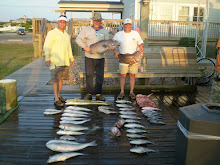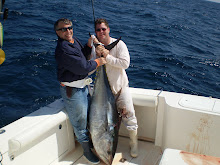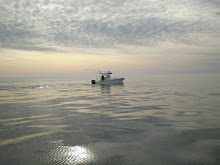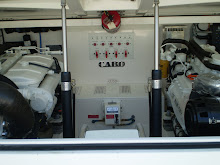 By Jim Field
By Jim FieldThis summer, while on vacation in Hatteras Village, the Fields, Ebners, and Okoniewskis took a day trip to Ocracoke Island on the
Sea Ya Bea. The next blog posting will cover this outing. This morning I thought it appropriate, thematically and as a preface of sorts, to put together a short profile of Ocracoke's lighthouse, given its special history and prominence in the visual landscape of surf, sand, and sky that constitute this island barrier between the Atlantic Ocean and Pamlico Sound.
I found the content below on www.carolinalights.com. I've also supplemented the narrative with information from other lighthouse-oriented sources.
Quick Facts- The existing Ocracoke Lighthouse was built in 1823
- It's the oldest North Carolina lighthouse still in continuous service
- It's the second oldest lighthouse in the U.S. in continuous service, Boston Light on Little Brewster Island was the first lighthouse built in the United States in 1716
- It be believed that an Indian village once existed at the site of the lighthouse
- It cost $11,359 to build
HistoryOcracoke Island is a sixteen (16) mile long barrier island, located off North Carolina’s Outer Banks, made famous by Blackbeard the Pirate, who used Ocracoke Island as a hideout. In 1715, an act was passed to establish Ocracoke Island as a port to help improve trade and navigation around the coast. By 1730, more people began arriving on the Island, and with this increase in population, colonists decided they needed a lighthouse to help vessels maneuver the inlet.
There was debate about building the proposed lighthouse on Ocracoke Island itself, or on nearby Shell Castle Island, which at the time was located in Ocracoke Inlet. In the late 1700s, the North Carolina General Assembly passed an act to build Ocracoke Lighthouse, although construction was delayed when, in 1790, the federal government took control of all navigational aids away from state governments. Eventually, in 1798, Shell Castle Island Lighthouse was built, notably by the same man who constructed the first Cape Hatteras Lighthouse.
Shell Island Castle LighthouseBuilt: 1798
Type: Pyramid-shaped wooden tower covered with shingles, on a stone foundation.
Height: 64 feet
Status: Destroyed 1818
Lens: One large lamp with four wicks
History: Shell Castle Island lighthouse was made useless by shifting sandbars and channels, but it remained in operation until destroyed by lightning in August 1818. It was replaced by a lightship for a few years until Ocracoke Lighthouse was built in 1823. The builder of this lighthouse was Henry Dearborn, who also built the first Cape Hatteras Lighthouse
By the 1820s, Ocracoke Island had become a major shipping port. It was logical to once again consider putting a lighthouse on the island. Two acres near Silver Lake Harbor were purchased from Jacob Gaskill for $50. The lighthouse was approved for construction in 1822 and was built and lit by 1823. The new lighthouse only cost $11,359 to build, including a three-room keeper’s quarters.
The lighthouse structure stands 65 feet tall, and rises 75 feet above sea level. It was made of brick and plaster. At its base, the walls are five feet thick. It was originally equipped with a 3rd-order Fresnel lens, which was replaced with a 4th-order lens in 1854. The current lighting apparatus has 8,000 candlepower and can be seen from fourteen miles out to sea. In 1946, Ocracoke Lighthouse was automated and its keeper since 1926, “Cap’n” Joe Burrus, ended his time-in-service. He was a keeper for 45 years and also served at Cape Lookout Lighthouse and on Diamond Shoals Lightship.
In 1989, some minor repairs were made and painting was done. For safety reasons, the old wooden steps have been replaced with metal ones. The four windows from the lighthouse were removed an almost destroyed, but have since been restored by the Ocracoke Preservation Society. The U.S. Coast Guard owns and oversees the lighthouse, since it's a navigational aid, but the National Park Service maintains the lighthouse, grounds and keeper’s quarters.






































